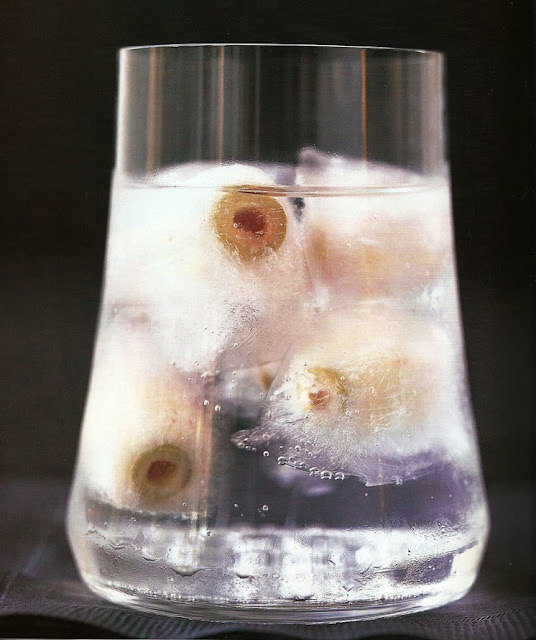My friends Brent Ridge and Josh Kilmer-Purcell (owners, curators and farmers of the historic Beekman Farm in Sharon Springs, New York) have expanded their goat farming operations to now include cheese making. Already renowned for their gorgeous, all-natural goats-milk soap, Brent and Josh have developed a new cheese that is now available online. The cheese is stunning to look at it and, I'm told, even more stunning to taste and it might be worth sampling at your Thanksgiving table.
Beekman 1802 Blaak is the first artisanal cheese produced from the goats at Beekman Farm. Blaak is an Italian-style semi-hard cheese made from a 60:40 mix of goat and cow milk giving the cheese a mild but distinctive flavor.

In keeping with traditional cheesemaking practices, this rare cheese is aged for 4 months in our caves and is coated with ash at each turning to promote the ripening of the wheel. The resulting edible black rind gives the cheese its name and makes it a true conversation piece on your table.
Brent and Josh describe the cheese below:
WHY BOTH COW AND GOAT?
It took us a while to perfect the “recipe” for Blaak. We wanted to create a cheese that was distinctive in taste but that could also appeal to people who don’t (or think they don’t) like the taste of goat milk cheeses. The cow milk mellows out the tanginess traditionally associated with goats' milk, but allows Blaak to maintain the lingering and sophisticated taste of the finest goat milk cheeses.
WHY RAW MILK?
Bacteria and mold are what give any cheese its flavor and texture. Most cheeses use pasteurized milk, which kills all ambient bacteria resulting in a predictable - and often bland - flavor. Beekman 1802 is a special place, and we think the Beekman goats are special, too. It stands to reason (at least by our logic) that our bacteria is fabulous as well. Pasteurizing our milk prior to making the cheese would prevent the resulting cheese from living up to its best natural potential.
WHY ASH?
The ash is helpful in mellowing the acidity to promote the affinage (a fancy word for ripening) and produce a more delectable cheese. It also helps make the cheese surface more hospitable to the growth of beneficial molds that add to the complexity of the overall flavor.

















 Martha takes a turn as the Ghoulish Glampire on one cover of the special 2007 Halloween issue, which had a uniuque double cover touting both Good Things and Bad Things for the holiday.
Martha takes a turn as the Ghoulish Glampire on one cover of the special 2007 Halloween issue, which had a uniuque double cover touting both Good Things and Bad Things for the holiday. On the Good Things end of the same Halloween issue, Martha casts a heavenly glow of light as a Roman goddess.
On the Good Things end of the same Halloween issue, Martha casts a heavenly glow of light as a Roman goddess. Back in wicked form this year, for the cover of the 2009 special Halloween issue, Martha chose a ghostly equestrienne as her muse.
Back in wicked form this year, for the cover of the 2009 special Halloween issue, Martha chose a ghostly equestrienne as her muse.











 This extremely creative design has transformed a pumpkin into a seasonal flower basket of sorts. Fill with dark flowers and foliage, such as roses and purple kale, and place on a mantel or table. The effect is dazzling! Get the complete instructions at
This extremely creative design has transformed a pumpkin into a seasonal flower basket of sorts. Fill with dark flowers and foliage, such as roses and purple kale, and place on a mantel or table. The effect is dazzling! Get the complete instructions at  Here, a bundle of sugar-maple leaves, in glorious shades of autumn, are carefully arranged into small bundles and wound together with floral wire. The bundles are again grouped together to make larger bundles. Inside the hollow pumpkin, place damp floral foam. Begin arranging the bundles from the center of the oasis, working in a circular form from the outside in to the center. The outer circle of leaves should hang over the edge of the pumpkin's opening by about six inches and lay against the pumpkin. Each consecutive circle should be slightly taller so that you wind up with a loose, round shape.
Here, a bundle of sugar-maple leaves, in glorious shades of autumn, are carefully arranged into small bundles and wound together with floral wire. The bundles are again grouped together to make larger bundles. Inside the hollow pumpkin, place damp floral foam. Begin arranging the bundles from the center of the oasis, working in a circular form from the outside in to the center. The outer circle of leaves should hang over the edge of the pumpkin's opening by about six inches and lay against the pumpkin. Each consecutive circle should be slightly taller so that you wind up with a loose, round shape. The pumpkin cache-pot idea works outdoors, as well. Here, a lovely arrangement is punctuated by hits of glittering gold. Spray-painted dried flowers from a craft store give the arrangement a hit of glamour. The gold theme is carried subtly across a vignette of smaller pumpkins and gourds in shades of green and gray, which are arranged around the centerpiece, creating a lovley moment on a rustic, wooden bench.
The pumpkin cache-pot idea works outdoors, as well. Here, a lovely arrangement is punctuated by hits of glittering gold. Spray-painted dried flowers from a craft store give the arrangement a hit of glamour. The gold theme is carried subtly across a vignette of smaller pumpkins and gourds in shades of green and gray, which are arranged around the centerpiece, creating a lovley moment on a rustic, wooden bench.















